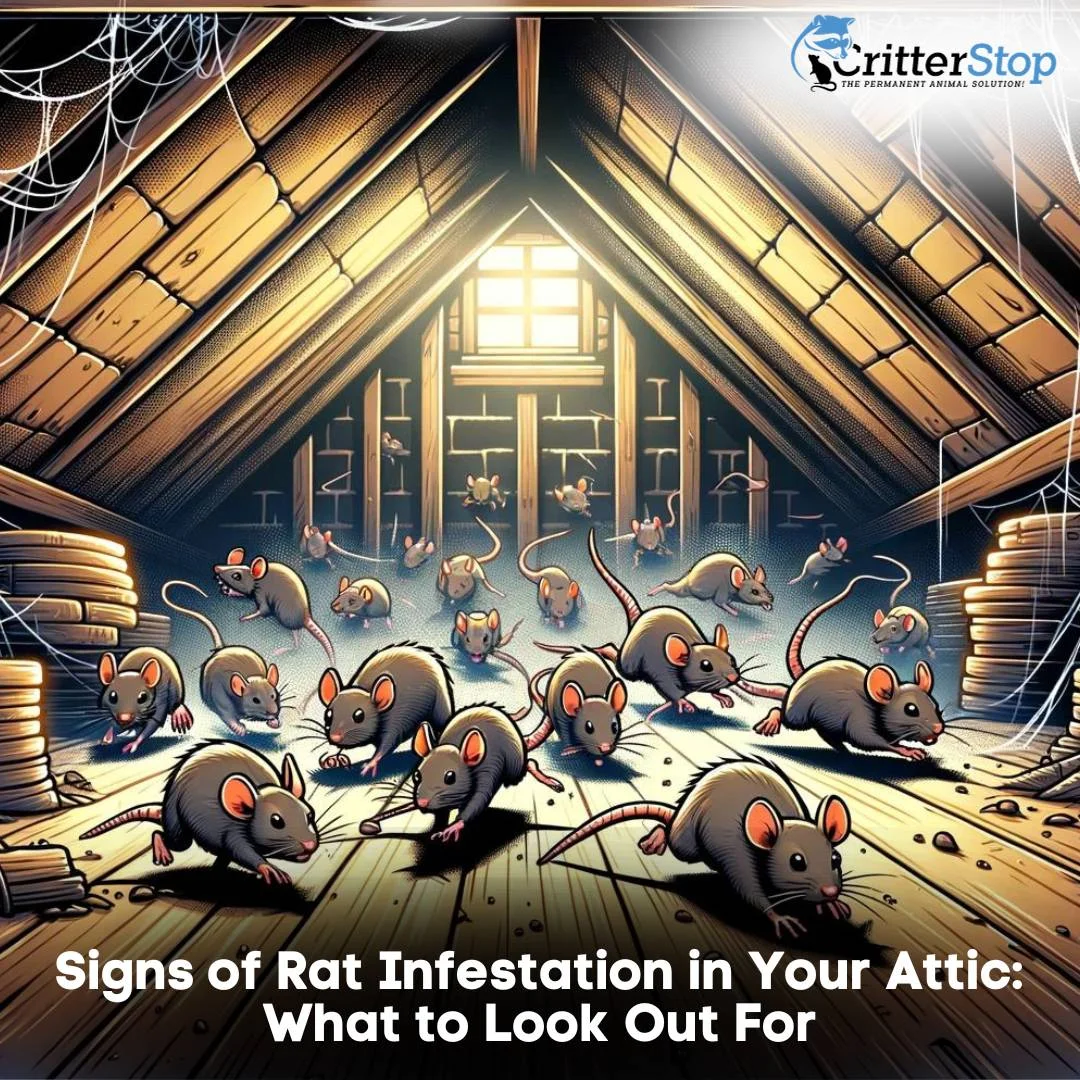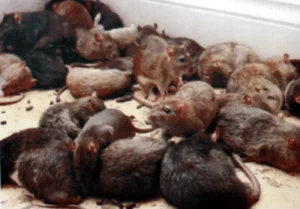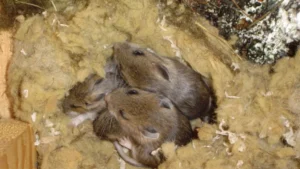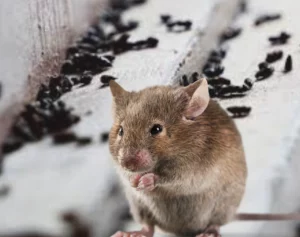
If you suspect that your attic may have a rat infestation, it's important to act quickly. Rats can cause significant damage to your property and pose health risks to you and your family. By identifying the signs of rat infestation early on, you can take the necessary steps to eliminate these pests. In this article, we will discuss common signs of rat infestation, how to spot rat droppings and damage, the dangers of having rats in your attic, ensuring a safe and healthy environment, and the benefits of hiring experts for effective rat removal.
Rats are known to seek shelter in attics, as they provide a warm and safe environment. To determine whether your attic is infested with rats, it's essential to be aware of the common signs.
When it comes to rat infestations, being proactive is key. The sooner you identify the problem, the easier it will be to address and prevent further damage. Let's explore some common signs that can help you identify rat infestation in your attic.

One of the most obvious signs of rat infestation is the presence of rat droppings. These droppings are usually small and pellet-like, resembling dark grains of rice. They can be found scattered near their nesting areas and along their regular paths.
As you inspect your attic, keep an eye out for urine stains or greasy markings along walls and attics. Rats have a habit of rubbing their bodies against surfaces to mark their territory, leaving behind these telltale signs.
Chewed wires, insulation, and damaged stored items can also indicate rat activity. Rats have a constant need to gnaw on objects to keep their teeth from growing too long. This behavior can lead to electrical issues, fire hazards, and structural damage.

When it comes to rat droppings, it's important to know what to look for. Fresh droppings are dark in color and moist, while older droppings tend to dry out and become lighter in color. By observing the condition of the droppings, you can get an idea of the size of the rat population in your attic.
Aside from droppings, keep an eye out for gnaw marks on wooden structures, wires, and pipes. Rats have strong teeth that grow continuously, so they constantly chew on objects to keep their teeth in check. If you notice any signs of gnawing, it's a clear indication of rat activity.
Furthermore, rats are known to create nests using materials they find in your attic. Look for shredded insulation, fabric, or paper, as these are common nesting materials for rats. If you come across any of these signs, it's crucial to take immediate action to prevent further infestation.
Remember, identifying rat infestation in your attic is just the first step. It's important to address the problem promptly to avoid potential health risks and structural damage. If you suspect a rat infestation, it's recommended to seek professional help to safely and effectively remove the rats from your attic.
A rat infestation in your attic can have several negative consequences, both for your health and your property.
Having rats in your attic is not only a nuisance but also poses serious health risks. These rodents carry diseases that can be transmitted to humans through their droppings, urine, and bites. One such disease is leptospirosis, a bacterial infection that can cause symptoms such as high fever, severe headache, muscle aches, and vomiting. Another disease carried by rats is hantavirus, which can lead to Hantavirus Pulmonary Syndrome (HPS), a potentially fatal respiratory disease. Additionally, rats can transmit salmonellosis, a type of food poisoning that causes symptoms like diarrhea, fever, and abdominal cramps.
It's not just the diseases that rats carry that can harm your health. Breathing in allergens from rat droppings and urine can also trigger asthma and other respiratory issues. The microscopic particles from their waste can become airborne and easily inhaled, leading to allergic reactions and respiratory distress. This can be particularly dangerous for individuals with pre-existing respiratory conditions or weakened immune systems.
Aside from the health risks, rats can also cause extensive damage to your attic and its contents. These pesky rodents have strong teeth that can chew through almost anything, including electrical wires. Gnawing on electrical wires not only increases the risk of electrical fires but also poses a serious safety hazard for you and your family. The damage caused by rats doesn't stop there - they can also chew through insulation, wooden structures, and stored items. This can lead to costly repairs and replacements, as well as compromising the structural integrity of your attic.
Furthermore, rats are notorious for their ability to reproduce rapidly. A small infestation can quickly turn into a full-blown rat colony, causing even more damage to your attic and property. These rodents are known to create nests using various materials, including insulation, fabric, and even your personal belongings. Their constant chewing and nesting activities can weaken the structure of your attic, making it more susceptible to leaks and other forms of damage.
In conclusion, having rats in your attic is not something to be taken lightly. The health risks associated with rat infestations are significant, ranging from the transmission of dangerous diseases to triggering respiratory issues. Additionally, the potential damage to your property can be extensive and costly. It is crucial to address a rat infestation promptly by seeking professional pest control services to ensure the safety of your health and the integrity of your home.
When dealing with a rat infestation in your attic, it's important to prioritize your health and safety.
Living with rats can pose serious health risks, as they are known carriers of various diseases. From hantavirus to leptospirosis, these pests can transmit harmful pathogens through their droppings, urine, and saliva. Therefore, it is crucial to take necessary precautions when dealing with a rat infestation.
Wear gloves, a mask, and protective clothing when cleaning up rat droppings and nesting materials. This will help minimize the risk of direct contact with these potentially infectious materials. Additionally, it is advisable to use disposable gloves to avoid cross-contamination between different areas of your home.
Before starting the cleanup process, it is essential to wet the affected areas with a disinfectant solution. This will help prevent the spread of airborne particles that may contain harmful pathogens. By dampening the area, you can effectively reduce the chances of inhaling any potentially dangerous dust.
Thoroughly clean and disinfect the affected areas to eliminate any pathogens. Use a bleach solution or a commercial disinfectant specifically designed for rodent cleanup. Pay close attention to surfaces that may have come into contact with rat droppings, such as insulation, walls, and floors. Remember to follow the manufacturer's instructions when using any cleaning products.
In addition to cleaning, it is essential to identify and repair any potential entry points that allowed rats to infest your attic. By sealing off these entry points, you can prevent rats from entering other parts of your home, reducing the risk of further infestation.

If you decide to clean up the infested attic yourself, take extra precautions. Start by ensuring you have the necessary tools and equipment to safely handle the situation. This may include sturdy gloves, a mask or respirator, protective clothing, and a vacuum cleaner with a HEPA filter.
Before entering the attic, make sure to turn off any ventilation systems to prevent the spread of dust and contaminants throughout your home. It is also advisable to inform other household members about the cleanup process and restrict their access to the affected area.
When removing rats from your attic, it is crucial to use appropriate trapping methods. Snap traps, live traps, and glue traps are commonly used for rat control. However, it is important to follow local regulations and guidelines when using these methods. If you are uncertain about the best approach, consider seeking professional help from a pest control expert.
Properly dispose of any dead rats and sanitize the area to remove traces of rodent activity. Double-bag the carcasses and place them in sealed containers before disposing of them in accordance with local regulations. Thoroughly clean and disinfect all surfaces, including walls, floors, and objects that may have come into contact with rats or their droppings.
Remember, when dealing with a rat infestation, it is crucial to prioritize your health and safety. If you are unsure about how to handle the situation, it is always best to consult with a professional pest control service. They have the expertise and knowledge to effectively eliminate the infestation while ensuring the safety of your home and family.
While some homeowners may attempt to address rat infestations themselves, it's often more effective to seek professional rat extermination services.
Professional exterminators have the knowledge, tools, and experience to effectively eliminate rats from your attic. They can identify entry points, implement targeted trapping techniques, and provide long-term solutions to prevent future infestations. Hiring professionals can save you time, effort, and money in the long run.
DIY methods, such as using traps or poison, may not completely eradicate rat infestations. Rats are resilient creatures that can quickly adapt to changes in their environment. They may avoid traps or develop resistance to certain types of bait. Professional exterminators have access to more advanced techniques and can customize their approach based on the severity of the infestation.
In conclusion, identifying the signs of rat infestation in your attic is crucial for prompt action. By being aware of common signs, spotting rat droppings and damage, understanding the dangers of having rats in your attic, ensuring a safe and healthy environment, and considering the benefits of hiring experts for effective rat removal, you can effectively eliminate rats and restore the safety of your home.